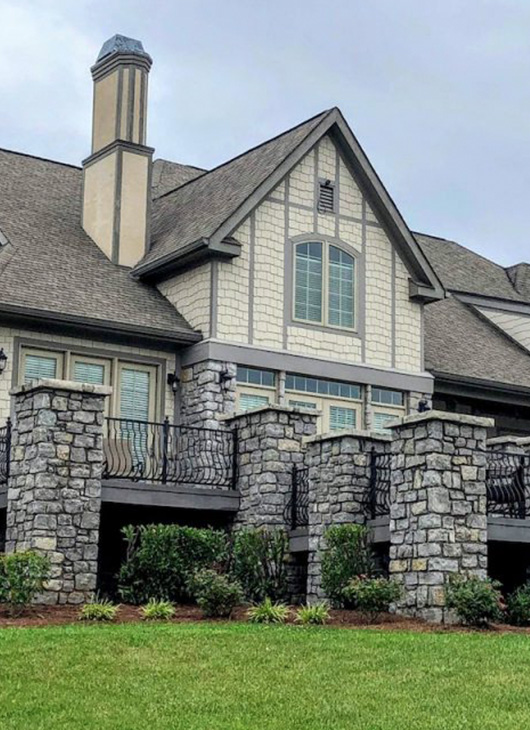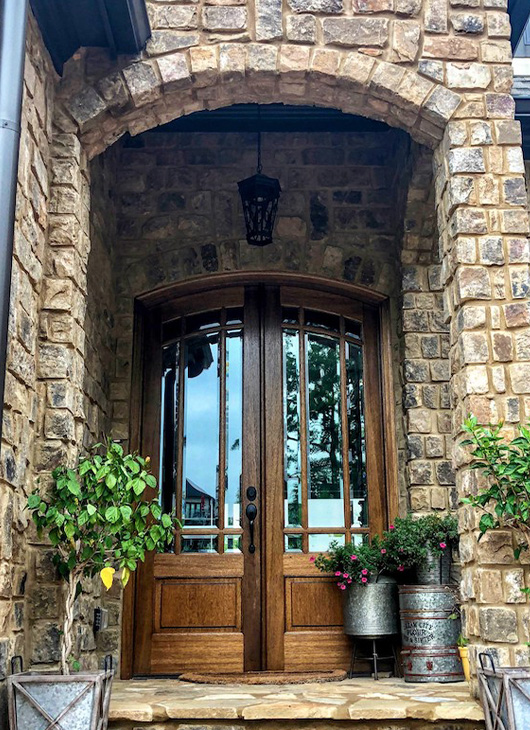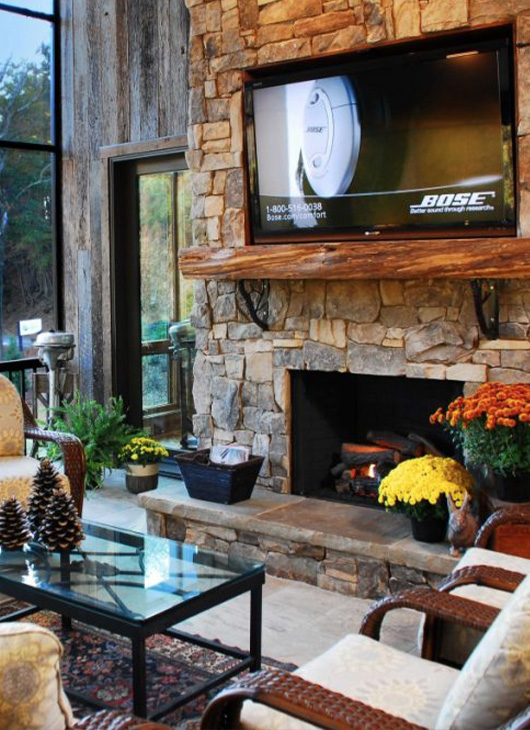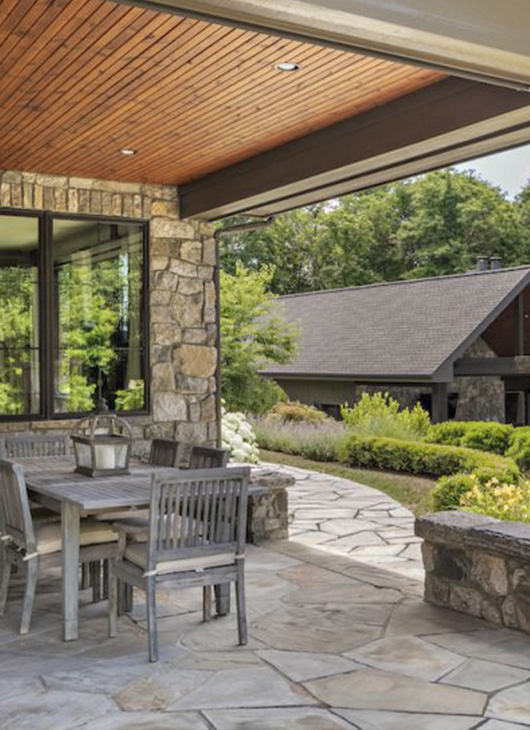Cost
- Veneer stone requires no stone support ledge or extra foundation support. Stone support ledges on poured walls average about $6.25 per lineal foot. With hundreds of feet in the footprint of the house, these cost savings alone can easily add up to the thousands of dollars.
- Veneer stone application takes less time to install than full dimension stone– about 1/3 less time. Ergo masons can install more stone per day, and do not have to allow for 3-4 feet areas for curing time. This means the masons stay on the job longer, and complete the entire project faster.
- Veneer stone does not have to be shaped at the job site. Chipping and shaping full stones is very time consuming and labor intensive. Using the veneer stone saves a lot of time.
- Veneer stone creates less waste to clean up on the job site. Full dimension stone can create as much as 15% – 30% waste and stone debris that has to be removed from the job site after the fact. This extra waste on the full dimension stone ends up costing more in the long run because of time and labor.
- Veneer stone requires less mortar and sand that results in less cost on the overall project.
All these additional savings add up to thousands of dollars on the completed job.


Real Stone
Real Stone Veneer products have been available for years, but recent innovations allow natural stone to be cut thinner, faster, and more efficiently than ever before. Current cutting technology transforms full-thickness, natural stone into lightweight, thin stone veneer (nominal 1-1/4 inch thickness). These lightweight pieces reduce production, shipping, and construction costs, allowing for greater affordability, installation versatility, and real value when compared to manufactured, imitation stone products.
Real Stone Veneers can be installed quickly, without footings or ledges and they adhere to concrete, plywood, paneling, drywall, and even metal. 90-degree angles cut from full-thickness stones are used in corner applications that conceal the true thickness of the stone. The overall result is an application that looks like a traditional full thickness installation.
The advantages of Real Stone Veneer over manufactured stone are:
- Durability– Real stone will not fade or crack over time. It can last for centuries.
- Aesthetics– The look is superior to the man-made painted product. Characteristics which identify natural stone– such as the texture, moss or lichen growing on the rock, unique shapes, etc.– cannot be recreated with manufactured stone.
- Versatility– Real Stone Veneers can be cut, and shaped to any size necessary for the project at hand.
Sustainability
As a natural product, real stone veneers are inherently eco-friendly. Natural stone currently offers many attractive, environmentally-friendly attributes, including an enduring life-cycle, durability, ease of care and maintenance, recyclability, and quarry and manufacturing best practices.
Using natural stone shows that you take responsibility to care for the earth by actively striving to preserve, restore, or improve the natural environment. This article details the reasons why stone is an environmentally friendly choice for construction materials.
Why Build Green?
Constructing buildings in an environmentally-considerate way requires careful thought and planning; however, the payback from a green building far outweighs this price. Conventional building practices require large quantities of energy and water consumption, while generating excessive air emissions and waste streams. These impacts are also caused within the product manufacturing process. Moreover, indoor air quality can be adversely affected when unhealthy building materials are employed.
Implementing green building techniques reduces impacts on the environment and human health during both construction and operation of a structure, as well as during the production of manufactured building materials.
An accurate assessment of the environmental profile of stone products and impacts over the entire life cycle of the stone.
Real Stone Veneers of TN™ strives to meet or exceed all best practices in quarrying, harvesting and producing stone products as detailed below.


Thin Stone
Thin Stone is the new solution to using stone on your home. The fastest growing product of stone suppliers, thin stone is making real stone available to a much broader audience. It’s developing a niche in applications where stone previously wouldn’t have been considered because of cost or weight restrictions.
Beautiful, natural, thin stone veneer is a facing product— real stone that doesn’t need the ledger, footings or wall ties required by conventional, full-thickness veneer products.
Thin stone veneer is lightweight enough to be supported by the wall it covers. Always less than 15 pounds per square foot. Thin cut stone adheres to all building code specifications for applied veneers. This means that builders can construct a conventional wood frame or block backup, and apply real stone over the surface.
But is it “thin stone,” “sliced stone,” or “natural thin veneer”? The product has taken off so quickly, even those who produce and sell it don’t refer to it by a single name. Outside the business, these interchangeable terms have sometimes led to confusion, but really they refer to the same great products we use for a range of applications.


